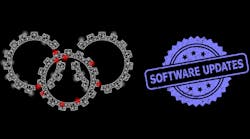How to Use Ada to Insulate Software from Hardware Updates (.PDF Download)
Hopefully, the software you pour your time and effort into will be around to make the world a better place for a long time. But will today’s hardware be sufficient to support future features and requirements? The breakneck pace at which new hardware, with increased resources, comes to market provides some relief for worries. But what if it also results in the obsolescence of your existing hardware? Can your codebase gracefully migrate to new hardware (i.e., can you recompile the source code and expect the correct behavior) when the time for an update arrives?
One issue that arises is the explicit use of non-portable constructs in your programming language; for example, features that are implementation-dependent or have unspecified or undefined behavior. This is a well-studied area, and the standards for languages like C, C++, and Ada identify and characterize all of the features whose semantics can exhibit such behavior.
